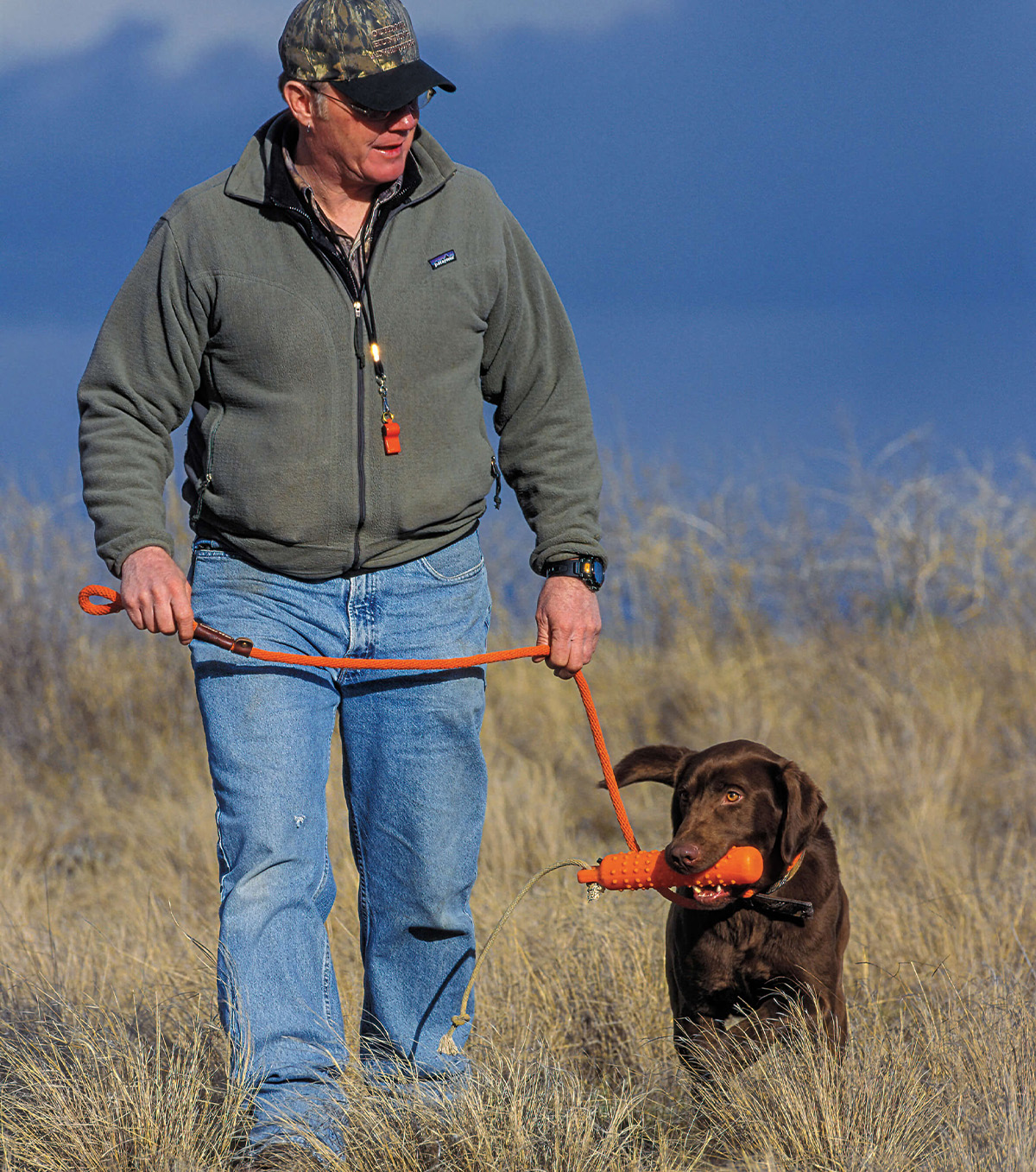Collars and Leads
For training and for safety, every dog owner needs these basic tools
For training and for safety, every dog owner needs these basic tools


When humans first recruited dogs to serve as hunting partners, it was a short step to the invention of tools that gave us a measure of control over our canine companions. Thus were the collar and the lead (or leash), the most fundamental tools of all, born.
The earliest known depictions of dogs, carved into sandstone cliffs in Saudi Arabia 8,000 years ago, show dogs tethered to the waists of human hunters. The collar as we know it today was invented by the Sumerians about 5,000 years ago. A clay plaque from that era shows a dog wearing a collar of braided fibers. Several centuries later, the Egyptians became the first to personalize collars with dogs' names. And a few centuries after that, the Greeks came up with the choke chain, the unfortunately named but incredibly effective collar that's still in use today.
Collars and leads remain indispensable. Today, they are made from many different materials and in a bewildering variety of styles. While leather is certainly the traditional choice, both for collars and leads, it has a number of practical disadvantages. Leather requires regular treatment with neatsfoot oil or the equivalent to prevent cracking and to stay supple, it is subject to mildew and rot, and it is irresistibly attractive to puppies looking for something to chew on. Leather leads also have more "give" than leads made of synthetic materials, compromising your ability to make a quick, emphatic correction.
If you like the looks of a leather collar and are willing to do the upkeep, there's no reason your dog shouldn't wear one for everyday use. Just remember to swap it out for one made of nylon when you head out to train or hunt.
Collars made of coated nylon are really the way to go (TufFlex and DuraSoft are two of the popular trade names). They're strong, they're impervious to the elements, they don't absorb odors, and they wipe clean with a damp cloth. They're relatively inexpensive too, and you can get one in just about any color that suits your fancy. For most retriever-sized dogs, you'll want a collar that is one inch wide; for smaller, spaniel-sized dogs, a 3/4-inch collar is fine.
You can get a collar with a D-ring (or a D-end, which is similar but somewhat stouter), a center ring, or both a D-ring and center ring. This last option offers the most versatility, although there is a cohort of sportsmen and trainers who favor the center-ring-only design on the grounds that it's the least likely to hang up on brush or other obstructions.
Regardless of the style you choose, be sure it's one that you can equip with a nameplate with your contact information. Stuff happens out there, and if your dog gets away from you, for whatever reason, a nameplate on his collar is awfully cheap insurance.
I realize that some retriever and spaniel people-serious field-trialers, for example-typically don't keep collars on their dogs, and of course that's their prerogative. But for those of us in the dog-owning rank and file, I can't think of a single reason not to.
You can use a lead made from just about any material for walking your dog through the neighborhood. For training and field use, woven polypropylene gets the nod. It's strong, lightweight, waterproof, and doesn't stretch. The six-foot length is right for most dogs and situations. The 1/2-inch width is standard, but 3/8-inch is fine too. Don't go any thinner than that, though, as the lead gets "whippy" if you have to apply a correction, and it can dig painfully into your hands if you're not wearing gloves.
A variation on the standard lead design is the slip lead. Often called a "British-style" lead, it has an adjustable tab that allows you to form a sliding loop. You place the loop over the dog's head and position it as you would a collar. The loop tightens when the dog strains against the lead and loosens when he stops fighting it. The slip lead is a terrific tool for teaching the heel command. The dog learns that it is within his power to release the pressure, and that it is a heck of a lot more pleasant to walk obediently on a slack lead than it is to pull against a taut one.
Ducks Unlimited uses cookies to enhance your browsing experience, optimize site functionality, analyze traffic, and deliver personalized advertising through third parties. By continuing to use this site, you agree to our use of cookies. View Privacy Policy